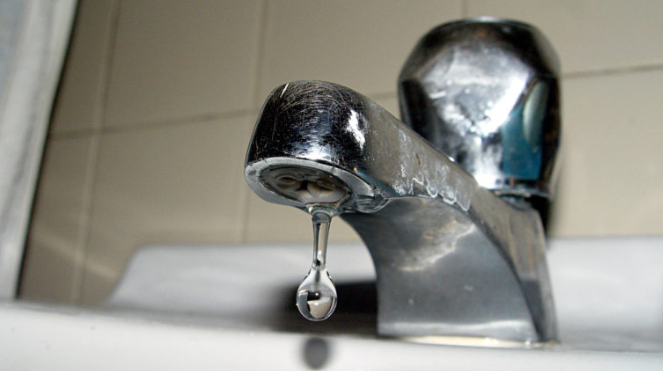UPDATED Nov 7, 3:30pm
The water supplied to 18 Garden Bay area homes is under a “do not use” warning from Vancouver Coastal Health (VCH) as of Nov. 4. Dream Valley Estates residents were notified by VCH that slightly elevated arsenic levels were detected in Sept. 28 water supply samples.
Health Canada’s maximum acceptable concentration (MAC) for arsenic in drinking water is 10 parts per billion (ppb). Two of three Dream Valley samples tested at 11.3 and 11.6 ppb. One of those samples tested raw water and one was on treated water.
As a precautionary measure, VCH advised users that the water should not be consumed or ingested by humans or pets until its advisory is lifted. The notice advises that boiling the water does not reduce the arsenic levels, but that the water remains safe for bathing, dish washing and other household uses.
Actions being taken
In the notice, VCH drinking water officer, Darren Molder outlined that on Oct. 3, an immediate investigation by the arsenic treatment technician who regularly maintains the water treatment system was ordered. He explained that the elevated contaminant results may have been a sampling or testing error but warranted investigation.
Helen LeBlanc, spokesperson for Clearwater Utilities, the firm responsible for the treatment and distribution of water to those homes advised Coast Reporter a follow-up test was conducted on Oct. 17 after the water system lines and tanks were flushed and other system troubleshooting was conducted. She reported that test showed arsenic levels remained “slightly above acceptable.”
Efforts to address the situation are ongoing with Clearwater working to “gain back the trust of the end users," according to LeBlanc.
Coast Reporter requested addition details about the situation from VCH on Nov. 4 and is awaiting a response.
Health risks low in short term exposures
“The MAC levels established by Health Canada for elements in drinking water are based on a lifetime of daily and consistent consumption of the same water. As such, short-term consumption of water with Arsenic at these levels is not expected to result in significant health impacts," Molder wrote in VCH’s warning. "However, since Arsenic in drinking water has the potential to result in serious health impacts, it is recommended that water consumers take action whenever elevated levels are detected in their water to minimize their exposure to this element as much as possible."
Email glitch means users uninformed for a month
VCH also stated that the residents should have been told about the test results on Oct. 3.
“Unfortunately, due to email miscommunication, this notice did not get circulated to water users, until November 3,” Molder wrote. He detailed that VCH became aware of that oversight when it tried to confirm notices to users had been sent. After learning notices had not been circulated, he indicated he reached out about the situation to area residents that he had email addresses for on Nov. 3.
LeBlanc confirmed the email address that VCH used to initially contact the firm on Oct. 3 “was not monitored.”
“Obviously the seemingly lack of information being distributed in a timely fashion is of great concern,” she wrote in her email.
Area resident Nigel Horsley, stated in an email to Coast Reporter, "I am extremely disappointed that for four weeks, unbeknownst to me, I have been drinking water with considerably higher levels of arsenic than is considered safe. I fail to understand why we, as individual customers, were not immediately informed and the water turned off.”
He doesn’t understand why immediate email notices to inform water users about the test results were not provided. “Clearwater has always been very prompt to remind me by email when my water fees are payable,” he wrote, indicating he would like to see “an inquiry [into what occurred] and some credible assurance that those who live here have not been adversely affected."
Does drought increase groundwater arsenic levels
In a Nov. 3 email to Coast Reporter, LeBlanc stated “I’m not an expert on arsenic but since high levels of arsenic first appeared during severe drought conditions years ago and again this year there may be some correlation.”
The Dream Valley Estates development was built about 22 years ago near Irvings Landing. It is supplied by water from an aquifer and a privately owned water treatment system. Aware of higher than MAC aresnic levels in area groundwater sources, VCH required system owners Clearwater Utilities implement filtration, treatment and monthly testing of the water.
“Arsenic on the Sunshine Coast is prevalent and since we installed the treatment to remove it approximately 20 years ago this is the first time we’ve had to issue an advisory,” LeBlanc wrote in her email.
A US Geological Service study conducted in collaboration with that country’s Centers for Disease Control and Prevention, released in March 2021 showed that drought may lead to elevated levels of naturally occurring arsenic and that the longer a drought lasts, the higher the probability of arsenic concentrations. The abstract of that study stated reasons for the increase vary depending on changes to groundwater flow, alterations in water chemistry and other factors. Because of that it stresses the importance of ongoing testing of wells providing drinking water.
In 1994, testing conducted by the Coast’s local health authority at that time, Coast Garibaldi Health discovered that drinking water wells on the Coast contained arsenic at levels higher than Canadian drinking water guidelines. In 2000, a University of BC study of 21 wells in the Powell River and southern Sunshine Coast locations carried out for the health authority showed that half had arsenic concentrations above drinking water guidelines. In its conclusion, the source of the high levels of arsenic in groundwater was thought to be mineralization deposits in bedrock fissures that dissolves and transports the arsenic into the wells. It noted that arsenic concentration levels did have seasonal variances.


